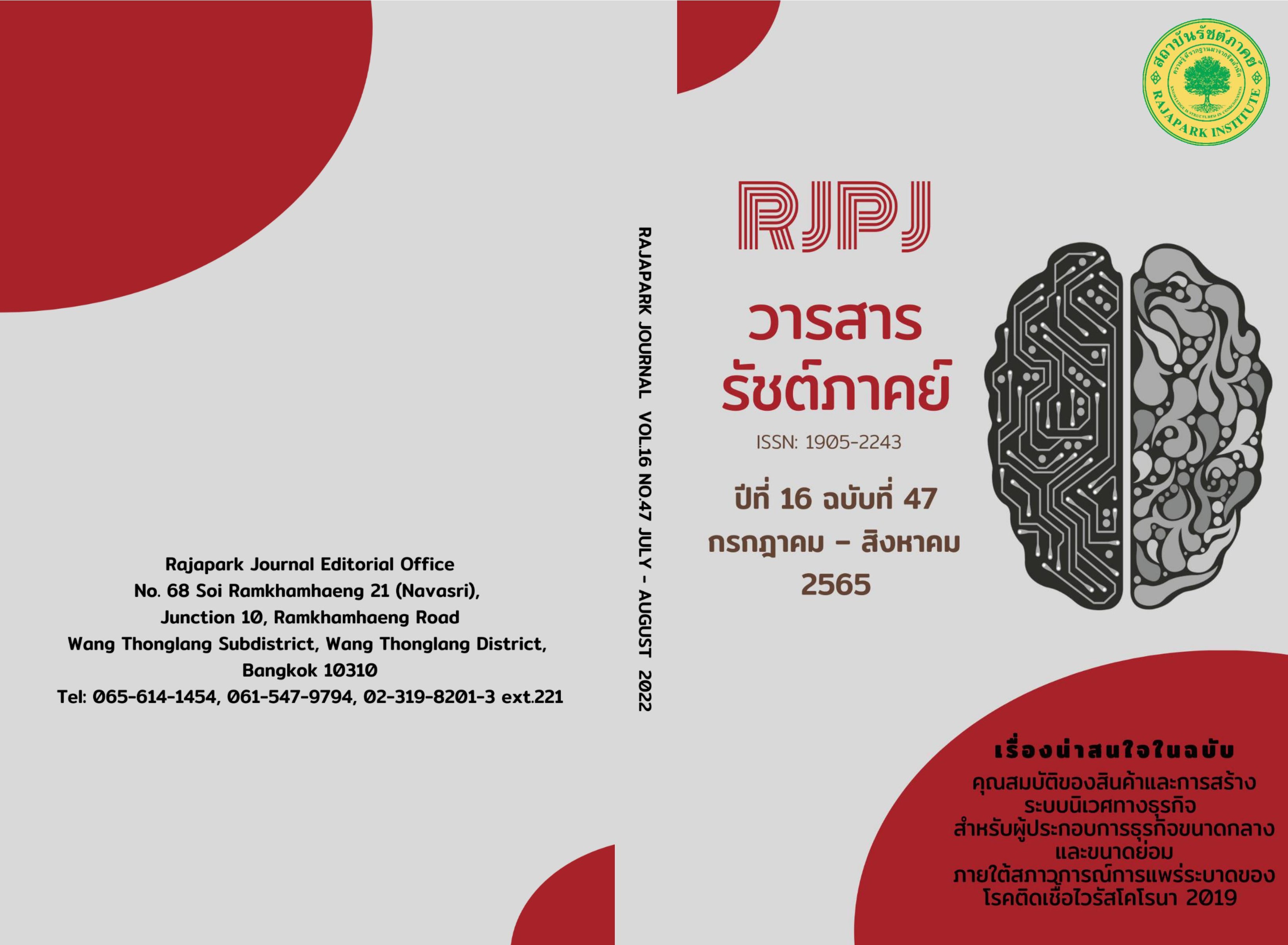Cross-Cultural Social Integration of Japanese Elderly Long Term Stay in Chiang Mai
Main Article Content
Abstract
The purpose of this qualitative research was to examine the integration of cross-cultural society of the Japanese elderly staying long-term in Chiang Mai. The key informants selected by purposive sampling included 12 Japanese, 60 years of age or older, holding a Non-Immigration Visa, code O-A (Long-Stay), staying in Chiang Mai for more than seven years, and being able to provide clear information on the studied issues. Data were collected by conducting in-depth interviews and observing forms. Content and theme analysis were employed to analyze the obtained data for summarizing the research results. The qualitative findings revealed that the most effective social integration among the Japanese elderly was functional integration, which involved the interdependence between different functions existing in society at the level of individuals, coteries, and organizations. The Japanese elderly had been given a new role that could build relationships with people in the community, integrating new roles in participating in the community in a variety of activities, which made it possible to integrate happily with long-term residency in Chiang Mai despite social and cultural differences. As for communicative integration, it was found that the Japanese elderly were likely to have less integration than other aspects.
Article Details

This work is licensed under a Creative Commons Attribution-NonCommercial-NoDerivatives 4.0 International License.
Views and opinions appearing in the Journal it is the responsibility of the author of the article, and does not constitute the view and responsibility of the editorial team.
References
Appadurai, A. (2002). Modernity at Large: Cultural Dimensions of Globalization. University of USA.
Ben-Rafael, E., Olshtain, E., & Geijst, I. (1994). Aspects of identity and language acquisition among immigrants from the Commonwealth of Independent States. The NCJW Institute for Innovation in Education, School of Education. The Hebrew University of Jerusalem.
Durkheim, E. (1933). Theory of Social Organization. University of California.
Gondon, M.M. (1964). Assimilation in American Life: The Role of Race, Religion and National Origins. Oxford University.
Hongsranagon, P. (2005). Activities Arrange¬ment in Chiangmai Province for Long Stay Japanese pensioner tourists. Journal of Demography, 21(2), 85-98. http://www.cps.chula.ac.th/newcps/journalnew/user_detailarticle.php?arti_id=99
Kitayama, S., & Markus, H. R. (2000). The Pursuit of Happiness and the Realization of Sympathy: Cultural Patterns of Self, Social Relations, and Well-being. In E. Diener & E. M. Suh (Eds.), Culture and Subjective Well-being (pp. 113–161). The MIT Press.
Landecker, S. (1951). Type of Integration and Their Measurement. The American Journal of Sociology, 56(4), 332-340. https://www.jstor.org/stable/2771696
Lefebvre, H. (1991). The Production of Space. Blackwell.
Lustig, M.W., & Koester, J. (1993). Intercultural Communication Competence. Sage.
McLuhan, M. (1964). Global/Local: Media Literacy for the Global Village. Routledge.
Ministry of Tourism and Sports. (2019). Domestic Tourism Statistics (Classify by Region and Province 2019). https://www.mots.go.th/more_news_new.php?cid=525
Nishikito, E. (2020). The Current Situation of Aging Japanese Retirees and Their Impacts on Medical Services in Chiang Mai Province, Thailand. JSN Journal, 10(2), 100-118. https://doi.org/10.14456/jsnjournal.2020.13
Parsons, T., & Smelser, N. J. (1984). Economy and Society: A study in the Integration of Economic and Social theory. Routledge & Kegan Paul.
Warnes, A., & Patterson, G. (2000). Tourism and International Retirement Migration: Newforms of an Old Relationship in Southern Europe. University of Exeter.


